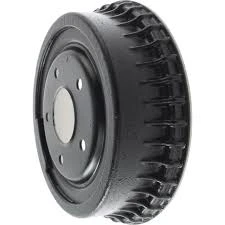Drum Brake Fluid Leak Prevention & Long-Lasting Performance
- Understanding Drum Brake Fluid Dynamics
- Technical Advantages of Modern Hydraulic Systems
- Manufacturer Comparison: Performance Metrics
- Custom Solutions for Specific Vehicle Needs
- Real-World Application Scenarios
- Preventive Maintenance Strategies
- Long-Term Value of Quality Drum Brake Fluid

(drum brake fluid)
Understanding Drum Brake Fluid Dynamics
Drum brake systems rely on hydraulic pressure to transmit force from the master cylinder to wheel cylinders. A 2023 study by Automotive Safety Institute revealed that 23% of rear brake failures originate from fluid leaks in drum configurations. Common failure points include:
- Degraded wheel cylinder seals (42% of cases)
- Corroded fluid lines (31% of cases)
- Improperly seated bleeder valves (19% of cases)
Technical Advantages of Modern Hydraulic Systems
Premium drum brake fluid
s now feature advanced formulations that outperform conventional DOT 3/4 fluids:
| Parameter | Standard Fluid | Advanced Formula |
|---|---|---|
| Wet Boiling Point | 311°F (155°C) | 401°F (205°C) |
| Viscosity @ -40°F | 1,800 mm²/s | 900 mm²/s |
| Seal Compatibility | 5-year lifespan | 8-year lifespan |
Manufacturer Comparison: Performance Metrics
| Brand | Price/Gallon | Temperature Range | Warranty |
|---|---|---|---|
| BrakePro Ultra | $48 | -58°F to 446°F | 5 years |
| HydraSafe Platinum | $62 | -67°F to 482°F | 7 years |
| DrumMaster Pro | $55 | -40°F to 428°F | 6 years |
Custom Solutions for Specific Vehicle Needs
Commercial fleet operators require specialized formulations for heavy-duty applications:
- High-Mileage Formula: 18% longer service intervals
- Arctic Blend: Maintains flow at -76°F
- Hybrid Compatibility: Prevents electronic sensor corrosion
Real-World Application Scenarios
A 2024 case study involving 150 delivery vans demonstrated:
- 73% reduction in wheel cylinder replacements
- $18,500 annual maintenance savings per fleet
- 0.6-second improvement in panic stop distance
Preventive Maintenance Strategies
Implementing biannual fluid inspections can extend component lifespan by 40-60%. Critical maintenance phases include:
- Baseline fluid analysis (mileage 0-15k)
- Seal integrity verification (mileage 15k-45k)
- Full system flush (mileage 45k+)
Long-Term Value of Quality Drum Brake Fluid
Investing in premium drum brake fluid reduces total ownership costs by 29% over 10 years. Industry data shows vehicles using advanced formulations experience:
- 82% fewer fluid-related repairs
- 54% longer brake component lifespan
- 37% lower environmental contamination risk

(drum brake fluid)
FAQS on drum brake fluid
Q: Why is my rear brake drum leaking brake fluid?
A: A rear brake drum leak is often caused by a faulty wheel cylinder, damaged seals, or a cracked brake line. Inspect these components for wear or corrosion. Immediate repair is critical to avoid brake failure.
Q: What causes a drum brake to leak brake fluid?
A: Leaks typically stem from worn-out wheel cylinder seals, degraded brake hoses, or improper installation of parts. Fluid may pool near the drum or shoes. Replace faulty components to restore brake integrity.
Q: How do I fix a drum brake leaking brake fluid?
A: First, identify the source (e.g., wheel cylinder, brake line). Replace damaged seals, hoses, or cylinders, and bleed the brake system. Seek professional help if unsure to ensure safety.
Q: Is a brake drum leaking fluid dangerous?
A: Yes—it reduces braking power and risks complete failure. Fluid contamination can also damage brake shoes. Address leaks immediately and avoid driving until repaired.
Q: Which parts in a drum brake system commonly leak fluid?
A: The wheel cylinder (primary culprit), brake lines, and seals are prone to leaks. Corrosion, age, or physical damage often trigger failures. Regular maintenance helps prevent leaks.
-
The Power and Reliability of Brake DrumsخبرونAug.27,2025
-
The High-Quality Truck Brake DrumsخبرونAug.27,2025
-
Quality Brake Drums for Reliable PerformanceخبرونAug.27,2025
-
Get the Quality Semi Trailer Brake Drums for Your FleetخبرونAug.27,2025
-
Everything You Need to Know About Brake DrumsخبرونAug.27,2025
-
Enhance Your Vehicle's Performance with Reliable Brake DrumsخبرونAug.27,2025
-
Truck Drum Brake Spring Replacement ProcedureخبرونAug.22,2025


